 Plenary Speakers
Plenary Speakers
2015 Plenary Speakers
Prof. Liu Chen
ZheJiang University, Hangzhou
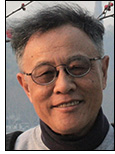 Liu Chen is a theoretical plasma physicist. He received his B.S. from National Taiwan University in 1966 and his Ph.D. from University of California at Berkeley in 1972. He then worked at Bell Laboratories (Murray Hill), Princeton University, and University of California at Irvine. Currently, he is Above-Scale Professor Emeritus at UC Irvine, and the Director and Guangbiao Chair Professor at Institute for Fusion Theory and Simulation, Zhejiang University, China. He is the recipient of the 2004 APS Award for Excellence in Plasmas Physics Research, the 2008 EPS Hannes Alfvén Prize, and the 2012 APS James Clerk Maxwell Prize. He is a Fellow of APS, American Association for Advancement of Sciences (AAAS), and American Geophysical Union (AGU).
Liu Chen is a theoretical plasma physicist. He received his B.S. from National Taiwan University in 1966 and his Ph.D. from University of California at Berkeley in 1972. He then worked at Bell Laboratories (Murray Hill), Princeton University, and University of California at Irvine. Currently, he is Above-Scale Professor Emeritus at UC Irvine, and the Director and Guangbiao Chair Professor at Institute for Fusion Theory and Simulation, Zhejiang University, China. He is the recipient of the 2004 APS Award for Excellence in Plasmas Physics Research, the 2008 EPS Hannes Alfvén Prize, and the 2012 APS James Clerk Maxwell Prize. He is a Fellow of APS, American Association for Advancement of Sciences (AAAS), and American Geophysical Union (AGU).
Dr. Noah Hershkowitz
2015 IEEE Marie Sklodowska-Curie Award Winner
Irving Langmuir Professor Emeritus of Engineering Physics
University of Wisconsin
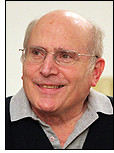 Noah Hershkowitz, the Irving Langmuir Professor Emeritus of Engineering Physics at the University of Wisconsin-Madison, received his B.S. in Physics from Union College in 1962 and his Ph.D. in Physics from the Johns Hopkins University in 1966. His Ph.D. research was on the Mössbauer Effect. He was a professor in the Physics Department at the University of Iowa from 1967 to 1981, where, after getting tenure, he changed his research area from Nuclear/Solid State Physics to Plasma Physics because it looked like it would be more fun (and it was). He was also a visiting professor at UCLA in 1974-5 and at the University of Colorado-Boulder in 1980-81. In 1981, he moved to UW-Madison, where he took over the leadership of the Phaedrus Tandem Mirror Program, and continued teaching and doing basic plasma physics. He has so far supervised fifty-six Ph.Ds.
For over 40 years, Noah’s research has broadened our understanding of the fundamental properties of plasma. His work has covered a wide range of plasma phenomena including low-temperature plasmas, semiconductor fabricating plasmas, fusion plasmas, and space plasmas. His groundbreaking contributions to understanding solitons, sheaths, and presheaths have impacted semiconductor etching, as the plasma sheath plays a major role in the linear acceleration of ions that results in the small features of modern microelectronic circuits. His pioneering work on emissive probes resulted in the development of a new technique for determining plasma potential by analyzing emissive probe emitted current. In 2002, he and his students were the first to measure plasma potential throughout the presheath and sheath at a boundary in a weakly collisional plasma. Noah was the Founder and Editor-in-Chief for sixteen years of Plasma Sources Science and Technology. He is an IEEE Life Fellow, as well as a Fellow of the APS, AVS, and IoP. He has won the IEEE NPSS Merit Award (1987), the IEEE PSA Award (1993), the AVS PSTD Plasma Prize (2004), and the APS DPP Maxwell Prize (2004).
Noah Hershkowitz, the Irving Langmuir Professor Emeritus of Engineering Physics at the University of Wisconsin-Madison, received his B.S. in Physics from Union College in 1962 and his Ph.D. in Physics from the Johns Hopkins University in 1966. His Ph.D. research was on the Mössbauer Effect. He was a professor in the Physics Department at the University of Iowa from 1967 to 1981, where, after getting tenure, he changed his research area from Nuclear/Solid State Physics to Plasma Physics because it looked like it would be more fun (and it was). He was also a visiting professor at UCLA in 1974-5 and at the University of Colorado-Boulder in 1980-81. In 1981, he moved to UW-Madison, where he took over the leadership of the Phaedrus Tandem Mirror Program, and continued teaching and doing basic plasma physics. He has so far supervised fifty-six Ph.Ds.
For over 40 years, Noah’s research has broadened our understanding of the fundamental properties of plasma. His work has covered a wide range of plasma phenomena including low-temperature plasmas, semiconductor fabricating plasmas, fusion plasmas, and space plasmas. His groundbreaking contributions to understanding solitons, sheaths, and presheaths have impacted semiconductor etching, as the plasma sheath plays a major role in the linear acceleration of ions that results in the small features of modern microelectronic circuits. His pioneering work on emissive probes resulted in the development of a new technique for determining plasma potential by analyzing emissive probe emitted current. In 2002, he and his students were the first to measure plasma potential throughout the presheath and sheath at a boundary in a weakly collisional plasma. Noah was the Founder and Editor-in-Chief for sixteen years of Plasma Sources Science and Technology. He is an IEEE Life Fellow, as well as a Fellow of the APS, AVS, and IoP. He has won the IEEE NPSS Merit Award (1987), the IEEE PSA Award (1993), the AVS PSTD Plasma Prize (2004), and the APS DPP Maxwell Prize (2004).
Prof. Umran Inan
Professor Emeritus, Stanford University, USA, and President, Koç University, Istanbul, Turkey
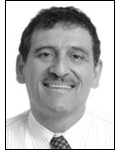 Professor Inan is currently the President of Koç University in Istanbul, Turkey. He is also a Professor (Emeritus) of Electrical Engineering at Stanford University, where he served as the Director of Space, Telecommunications & Radioscience Laboratory. At Stanford, Professor Inan managed numerous scientific projects totaling $100M and has served as the Principal Dissertation Supervisor for 60 PhD students. Prof. Inan is a Fellow of the American Geophysical Union, a Fellow of the Institute of Electrıcal and Electronics Engineering (IEEE), a Fellow of American Physical Society (APS), and is a member of Tau Beta Pi, Sigma Xi, and the Electromagnetics Academy. He has served as the Chair of the U.S. National Committee of the International Union of Radio Science (URSI) and the International Chair of Commission H (Waves in Plasmas) of URSI., and is currently serving as the Vice President of URSI. He was the recipient of the 2007 Stanford University Allan V. Cox Medal for Faculty Excellence in Fostering Undergraduate Research; the 1998 Stanford University Tau Beta Pi Award for Excellence in Undergraduate Teaching; several Group Achievement Awards from the National Aeronautics and Space Administration and the European Space Agency; the Antarctic Service Medal of the U.S., with an Antarctic Mountain named “Inan Peak” in his honor; and the 2008 Appleton Prize from URSI and the Royal Society. Professor Inan recently received 2010 Special Science Award from the Scientific and Technological Research Council of Turkey, and is a Member of the Turkish Academy of Sciences and The Science Academy.
Professor Inan is currently the President of Koç University in Istanbul, Turkey. He is also a Professor (Emeritus) of Electrical Engineering at Stanford University, where he served as the Director of Space, Telecommunications & Radioscience Laboratory. At Stanford, Professor Inan managed numerous scientific projects totaling $100M and has served as the Principal Dissertation Supervisor for 60 PhD students. Prof. Inan is a Fellow of the American Geophysical Union, a Fellow of the Institute of Electrıcal and Electronics Engineering (IEEE), a Fellow of American Physical Society (APS), and is a member of Tau Beta Pi, Sigma Xi, and the Electromagnetics Academy. He has served as the Chair of the U.S. National Committee of the International Union of Radio Science (URSI) and the International Chair of Commission H (Waves in Plasmas) of URSI., and is currently serving as the Vice President of URSI. He was the recipient of the 2007 Stanford University Allan V. Cox Medal for Faculty Excellence in Fostering Undergraduate Research; the 1998 Stanford University Tau Beta Pi Award for Excellence in Undergraduate Teaching; several Group Achievement Awards from the National Aeronautics and Space Administration and the European Space Agency; the Antarctic Service Medal of the U.S., with an Antarctic Mountain named “Inan Peak” in his honor; and the 2008 Appleton Prize from URSI and the Royal Society. Professor Inan recently received 2010 Special Science Award from the Scientific and Technological Research Council of Turkey, and is a Member of the Turkish Academy of Sciences and The Science Academy.
Prof. Yakov Krasik
Technion – Israel Institute of Technology
 Yakov E. Krasik received his Ph.D. (1980) in physics from the Joint Institute for Nuclear Research, Dubna, Russia. From 1980 to 1991, he was with the Nuclear Research Institute, Tomsk and from 1991 to 1996 with the Weizmann Institute of Science, Rehovot, Israel. Since 1997, he has been with the Physics Department, Technion, Haifa, Israel, where he is currently a Professor and Head of the Plasma and Pulsed Power Laboratory. He has supervised 16 Ph.D. students and 21 M.Sc. students, and published around 220 papers. His main research interests are related to pulsed current-carrying plasmas, plasma diagnostics and pulsed generators.
Yakov E. Krasik received his Ph.D. (1980) in physics from the Joint Institute for Nuclear Research, Dubna, Russia. From 1980 to 1991, he was with the Nuclear Research Institute, Tomsk and from 1991 to 1996 with the Weizmann Institute of Science, Rehovot, Israel. Since 1997, he has been with the Physics Department, Technion, Haifa, Israel, where he is currently a Professor and Head of the Plasma and Pulsed Power Laboratory. He has supervised 16 Ph.D. students and 21 M.Sc. students, and published around 220 papers. His main research interests are related to pulsed current-carrying plasmas, plasma diagnostics and pulsed generators.
Prof. XinPei Lu
State Key Laboratory of Advanced Electromagnetic Engineering & Technology, HuaZhong University of Science and Technology
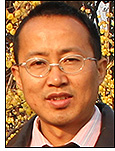 XinPei Lu received his Ph.D degree in electrical engineering from the HuaZhong University of Science and Technology, China, in 2001. From 2002 to 2006 he worked at Old Dominion University as a research associate. In 2007, he joined HuaZhong University of Science and Technology, where he is now a Professor with the College of Electrical and Electronic Engineering. His research interests are low-temperature plasma sources and their biomedical applications. He is the author or coauthor of about 100 peer-reviewed journal articles in Phys. Rep., Sci. Rep., Stem Cell Research, PLoS ONE, Appl. Phys. Lett., Phys. Plasmas, etc. and holds 6 patents in these areas.
XinPei Lu received his Ph.D degree in electrical engineering from the HuaZhong University of Science and Technology, China, in 2001. From 2002 to 2006 he worked at Old Dominion University as a research associate. In 2007, he joined HuaZhong University of Science and Technology, where he is now a Professor with the College of Electrical and Electronic Engineering. His research interests are low-temperature plasma sources and their biomedical applications. He is the author or coauthor of about 100 peer-reviewed journal articles in Phys. Rep., Sci. Rep., Stem Cell Research, PLoS ONE, Appl. Phys. Lett., Phys. Plasmas, etc. and holds 6 patents in these areas.
Dr. Dan Sinars
Sandia National Labs
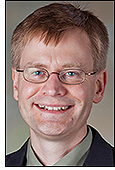 Daniel is a manager at Sandia National Laboratories with the responsibility of overseeing research in Inertial Confinement Fusion, Radiation Effects, and High Energy Density Physics using the "Z" pulsed power facility. The Z machine is the world's most powerful pulsed power device, delivering a 26 MA, 80-TW, 100-ns current pulse to various loads generating magnetic pressures of order 100 Mbar which can be used to accelerate and converge fusion fuel or to drive materials to extreme conditions.
Daniel is a manager at Sandia National Laboratories with the responsibility of overseeing research in Inertial Confinement Fusion, Radiation Effects, and High Energy Density Physics using the "Z" pulsed power facility. The Z machine is the world's most powerful pulsed power device, delivering a 26 MA, 80-TW, 100-ns current pulse to various loads generating magnetic pressures of order 100 Mbar which can be used to accelerate and converge fusion fuel or to drive materials to extreme conditions.
Dr. Alexander L. Velikovich
PSAC Award Winner
U.S. Naval Research Laboratory Plasma Physicist
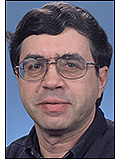 Alexander Velikovich graduated from Moscow State University, Russia, received his Ph.D. equivalent degree from the Kapitza Institute for Physical Problems, Moscow (1978), and a Habilitation equivalent degree of Doctor of Phys.-Math. Sciences from the Institute of High Current Electronics, Tomsk, Russia (1991). He specializes in Z-pinch and laser-fusion-related hydrodynamics and MHD, shock waves, hydrodynamic instabilities, shock-turbulence interaction, early-time perturbation evolution in laser targets. Dr. Velikovich is a Fellow of the American Physical Society (2005). He shared with his Sandia and NRL colleagues the DOE Defense Programs Award of Excellence (2010) and won the NRL Sigma Xi Award for Pure Science (2014).
Alexander Velikovich graduated from Moscow State University, Russia, received his Ph.D. equivalent degree from the Kapitza Institute for Physical Problems, Moscow (1978), and a Habilitation equivalent degree of Doctor of Phys.-Math. Sciences from the Institute of High Current Electronics, Tomsk, Russia (1991). He specializes in Z-pinch and laser-fusion-related hydrodynamics and MHD, shock waves, hydrodynamic instabilities, shock-turbulence interaction, early-time perturbation evolution in laser targets. Dr. Velikovich is a Fellow of the American Physical Society (2005). He shared with his Sandia and NRL colleagues the DOE Defense Programs Award of Excellence (2010) and won the NRL Sigma Xi Award for Pure Science (2014). 